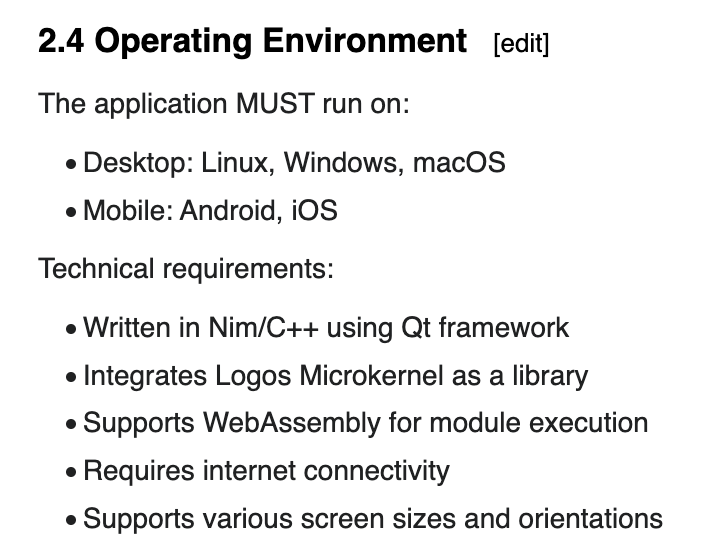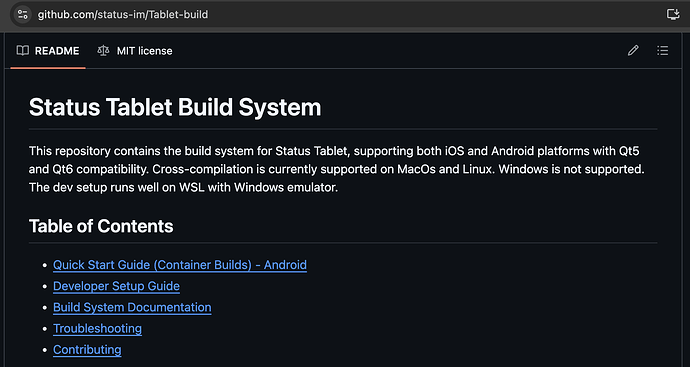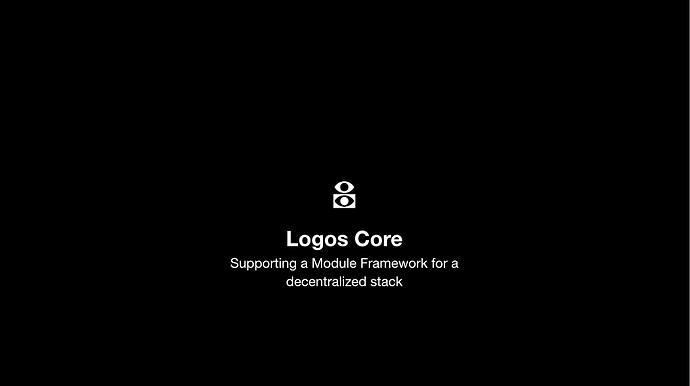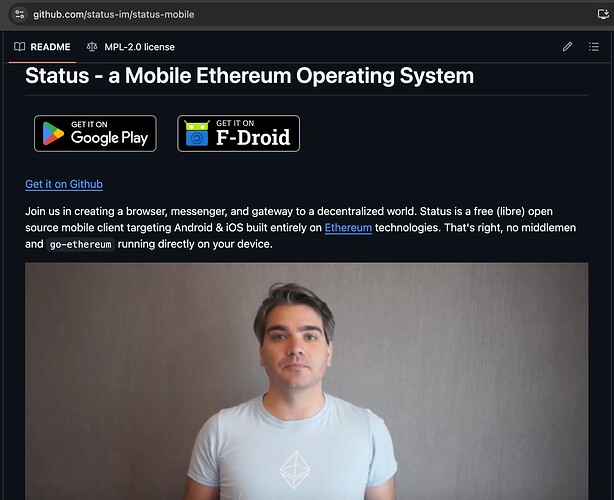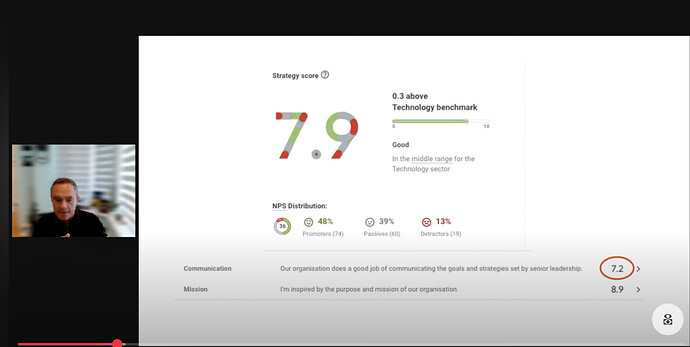TL;DR:
In May 2025, the mobile app at the heart of Status, one of Ethereum’s original ICO projects, was quietly terminated by its parent org, the Institute of Free Technology (IFT). The team was let go without prior notice, consultation or public announcement. This post is a reflection on how this happened, what it reveals about this style of governance, and why it should matter to anyone building in the p2p / web3 space.
An Open Letter To the Community
It is my privilege to introduce myself as a, now, former contributor of Status, someone who has for over five years poured passion and dedication into the project as a core contributor, I am an original ICO participant, and a recognised champion of the project’s stated principles.
This is a letter to community members and those within the IFT. Particularly those still in the IFT, as I am worried about you.
Two weeks ago (2025-05-20) the IFT announced, without prior consultation, its decision to immediately terminate all contracts for Core Contributors of the organisation’s founding project, Status Mobile. Additionally, it was revealed that the Status treasury would be indefinitely withheld by the IFT from any contributor wishing to continue to work on the original ICO funded initiative. This news has shocked CCs across the organisation.
Despite being the heart and soul of the Status project, decisions about the mobile project seemingly were kept secret from its CCs. Raising questions about the organisation’s attitudes to transparency, participation and community involvement. Embarrassingly for me, making my recent optimistic reflections on the direction of this organisation seem rather naïve.
Ultimately this move raises questions from many remaining CCs in the last few weeks, questions I’m sure you’ve been asking yourself.
- “What will be axed next and will it affect me or my colleagues?”
- And, given the nature (and the specifics) of the move. “Can any reassurance from the IFT be satisfying?”
The Announcement
The IFT leadership gave its reasons for terminating support for its flagship project in a series of communications. The first announcement was made in a private Google Meet call, where representatives of the IFT read prepared statements to all Status App and Status Web CCs, also in attendance were the IFT HR dept and the IFT C suite, including both founders Jarrad Hope and Carl Bennetts. The call ended without an opportunity for CCs to ask questions. Neither of the founders spoke during the call, and the founders did not reach out privately to the CCs who had been with them since before the ICO.
A few hours following this call a written announcement was made in the Logos Discord server, which read:
@everyone Today, the IFT made the very difficult decision to no longer fund the Status Mobile project (clojure codebase). This decision was motivated by a number of factors, including but not limited to:
- A trend in our industry, not only the Status Program; to focus efforts on a narrower portfolio of teams to maximize outcomes,
- The new ability to consolidate codebases while still targeting all architectures within the Desktop codebase (Nim/QT),
- Restructuring work priorities to bring the community earlier into the development process, thereby aligning to the larger organizational strategy of “growing the Tribe.,
A consequence of this decision is that a number of Core Contributors within the Status Application team will be let go, and a number will have transfer opportunities within the broader organization. Let us all be sensitive to our fellow colleagues during this difficult time, as they are still valuable members of the community. The difficulty of decisions like this should motivate us more to bring the community in closer and faster so that such a break isn’t seen as detrimental as it does today.
This drastic difference that those being let go feel is a very large indicator of us not being in the organizational position we need to be in. “Joining the community” shouldn’t feel so bad or have such an impact on our lives, and we as project maintainers and as an organization should seek to minimize that difference as much as possible, ideally completely eliminating it. The difference in working here as a Core Contributor and being a contributing member of the communities we’re fostering should be almost nothing.
I’m personally sorry to those that this IFT decision has impacted, it was not easy to make. I vow to continuously try and improve this organization such that you can easily continue to contribute to the projects I know you all love and care about, with or without our permission, and in a way that contributes to your personal sustainability
Notwithstanding the sentiment of the announcement, the message raised questions about the organisation’s relationship with its stated values. As discussed by many CCs in private calls and groups:
- Why is the adoption of the Nim programming language more desirable than Status’ existing users and CCs?
- How does removing the project’s most passionate and longest serving Core Contributors reconcile with the goal of involving the community more deeply?
- In what way should unpaid community involvement and paid professional engagement feel identical?
- What specific and tangible improvements does the IFT promise, and how will they address the current grievances and hardships now experienced by former core contributors?
- How does organisational trust and transparency exist while key decisions continue to be made without dialogue and contributor engagement?
- To what extent does the IFT leadership understand that meaningful communication requires dialogue beyond explaining after the fact what’s been decided behind closed doors?
The manner and timing of the IFT’s decision have prompted serious concerns among contributors (current and former) about the organisation’s direction and internal decision-making processes. While the announcement frames the shift as strategic and values-driven, its lack of clarity, absence of prior consultation, and abrupt execution have raised broader questions about governance and whether the IFT’s public commitments to community and decentralisation are still reflected in its actions.
Out of the Blue?
The decision to terminate Status Mobile appeared sudden to many, but the signals had been detectable for some time. A closer look reveals a pattern of quiet intent that began long before the official announcement.
The first signs emerged after the mass layoffs of August 2024, which halved the Status App teams and marked a period of internal volatility. Around this time, early rumours circulated about rewriting the entire application in Nim. These were categorically denied by leadership when raised, dismissed as misunderstandings or speculative noise.
But by early 2025, the strategic pivot had begun to take shape.
In January 2025, a document authored by IFT CEO Jarrad Hope appeared on the Logos wiki titled https://wiki.logos.co/wiki/Status/Requirements:
It explicitly stated “The application MUST run on: … Android, iOS” and be “Written in Nim/C++ using Qt framework”. You’ll also note the timestamp of the document “last edited on 4 January 2025, at 03:40”. When asked directly about these requirements in a 1:1 call, Jarrad described the document as merely a thought exercise for an insights consultant, and not a roadmap, and certainly not a set of requirements.
In February 2025 Iuri Matias, the then Status Desktop team lead, greenlit an initiative to start supporting tablets Fix UI elements that require mouse support · Issue #17237 · status-im/status-desktop · GitHub, while other work quietly began building a new “tablet build” of the desktop application Commits · status-im/Tablet-build · GitHub .
A couple of months later Iuri had officially moved into the IFT, and on day one (2025-04-27) of the IFT All Hands in Split, Croatia, he gave a keynote demonstration titled “Logos Core: Supporting a Module Framework for a Decentralised Stack”, presenting a Nim based proof of concept that he and Jarrad had been working hard on throughout the year.
On day two (2025-04-28) of the All Hands the Desktop team gave a presentation interestingly titled “Status Desktop Build Demo” which revealed a Nim / Qt6 build capable of running on tablets, with implications for mobile development. Neither session was framed in a way that hinted at strategic replacement.
However, during the demonstration of the Nim/Qt6 build on tablets, leadership openly discussed the feasibility of building on mobile. No advanced warning was given to the Status Mobile CCs that this was the purpose of the demo and the naming conspicuously lacked the words “tablet” or “mobile”. From this point the intent was clear and the temperament of some in the Status Desktop team became inexplicably and overtly hostile to Status Mobile CCs.
Following the offsite, the tone within the organisation changed, communication from parts of the Desktop team became very icy toward Mobile CCs and internal collaboration deteriorated.
Adding to this tension was a persistent and factually unsupported claim that Status “had no users.” This claim was repeated by both leadership and consultants, despite the organisation’s own metrics showing 34,000+ monthly active users, far higher than all other Status products. Desktop usage, meanwhile, was never reported being higher than 8% of Mobile’s.
Subsequently management internally announced a plan to outsource the work of the entire professional QA team to internal dogfooding and “SNT community” testing. The plan laid out the goal to “enable internal testing - ask people internally if they would like to test our release builds. enable external testing - ask the Status community on X and the Status App if they would like to test our release builds”.
These clues form a clear picture of a series of technical and organisational decisions that had the effect of sidelining the mobile team in favour of the Nim/Qt stack. This reflects a pattern of ambiguous communication, where strategic intent appeared to only become clear after key decisions were already in motion. Whether this was driven by technological ideology, internal politics, an assertion of control, or all of the above, the result was the same, the decision seems to have been established well before it was communicated. And regretfully, those most affected were given no opportunity to participate in or discuss the direction.
What We’ve Lost
The Status mobile app was foundational to the 2017 ICO, delivering the core promise of private, decentralised, censorship-resistant communication on mobile devices. With an average of at least 34,000 monthly active users, it remains the most adopted user product in the IFT ecosystem. But with the recent decision the IFT leadership has lost more than just an app, they’ve thrown away the biggest part of their community and the heart and soul of their developer work force.
I shared some of my first raw emotional thoughts internally on the day of the axing:
Status mobile IS Status, it is the very mission this organisation raised tens of millions of dollars for during its ICO. The project that embodied the promise of private, decentralised, censorship-resistant communication on mobile. The promise that brought us here. Now dead. …
It was the Status mobile team that carried the banner of openness and privacy during the dark years … of our project. We were the ones that said no, we were the ones that pushed back over and over again, we were the ones that repeatedly risked being fired … It was us, we did that and only the mobile team, we stood up when it was difficult and we did it alone.
I’ve mentioned repeatedly that among those terminated were CCs that have been with the organisation since before the ICO. These workers are the cultural through-line for the organisation, that anchor the project in its mission. Consider this June 2017 report on the Status IM ICO STATUS ICO ANALYSIS. OVERVIEW | by Blockchain Paper | Medium , of the 3 CCs still working in the Mobile team 8 months ago all of them have been terminated. Roman during the August 2024 layoff (whilst on leave), and Alexander and Andrey during this May 2025 project termination.
The team cultivated not just an app but a vibrant developer environment GitHub - status-im/status-mobile: a free (libre) open source, mobile OS for Ethereum, with 310 contributors, 996 forks and over 4000 stars.
During the Croatia All Hands the Status Mobile team was fizzing with ideas for how we could build features that would engage the community, unfettered from the misguided management that had hamstrung the project for more than 3 years. Many Status Mobile CCs started working in earnest to bring these features to life, things like resurrecting the dapp browser, localisation, improved navigation, chatbots and notifications. See the excellent work by Andrey If You Forked Status Today, What Would You Change First? the suggestions by Volodymyr Status app as a Funnel into Logos Tribe or the amazing work demonstrated by Cristian.

Every member of the Status Mobile team was a super star contributor, which is why this team was where much of the innovation and spirit of the entire Status organisation lay. The mobile CCs were drivers of principle based user centric development, regularly correcting the work of less aligned teams.
The longsuffering Mobile QA team were the backstop that paid the cost of less diligent CCs, while some teams moved fast and reckless apparently without consequence, the mobile QA team prevented catastrophic regressions reaching release through expert and rigorous test work.
The Status Mobile team embodied the mission and ethos of Status. They consistently delivered practical innovations and maintained unwavering dedication to our user community. The abrupt termination represents a significant deviation from the organisation’s foundational values and a failure to acknowledge genuine commitment and hard work.
This decision is not simply an organisational restructuring, it represents a disheartening departure from the original mission, a break with the contributors who held that mission close, and a loss for the community that relied on this product.
Farewell to Runnymede
Why would an organisation discard its most used product, its longest-serving contributors, and the one team with connections to the community still actively delivering on its founding mission?
To understand the IFT’s decision to terminate Status Mobile, it is necessary to look beyond the public justifications of “portfolio focus” and “codebase consolidation,” and examine the internal dynamics that have shaped the organisation for years.
Rather than following a deliberate, transparent strategy, the IFT’s direction has often been influenced by shifting leadership dynamics and abrupt changes in strategic direction. Over the years, contributors have observed a pervasive culture of insulation: layers of senior staff that, intentionally or not, often created distance between leadership and day-to-day feedback. The result has been a leadership structure more focused on managing perception than navigating reality.
Notably, these issues with governance and communication have long been identified by HR’s Peakon surveys as the biggest blocker to CC satisfaction, as was recently publicly acknowledged and discussed by HR Lead Jonathan Barker in an April 2025 Townhall call https://www.youtube.com/live/W0P9LuYNxBM?si=naUrq0wSoiOWsdT8&t=530 .
Former and current Core Contributors have described an environment where consistent strategy was often disrupted by spontaneous changes in direction, making it difficult to plan or execute effectively. Honest attempts at getting clarity on organisational basics were met with resistance or ambiguity What is Status? - #18 by samuel.
Even when I reflect on my earliest encounter with the CEO, I recall being publicly reprimanded as a newcomer to Status after asking for a follow-up resource mentioned during a product kickoff. The response, delivered in an open team channel, took the form of a sharply worded ten-paragraph message. As someone new to the organisation, I experienced it as deeply critical and disproportionately harsh, especially given that I had asked for documentation in good faith.
Incidents like these are not isolated. Over the years, similar stories have accumulated, pointing to a broader pattern: Inconsistent leadership presence, frequent shifts in tone and communication style, and an absence of active engagement from leadership during pivotal organisational moments. Accountability is rarely offered, and when it surfaces, it often comes not through reflection but through the medium of layoffs or silent departures.
In a telling incident last year, the IFT saw the resignation of one of its most respected and technically capable leads, not due to performance, but following a protracted time of internal turmoil and a persistent failure of leadership to take accountability. In an act of palpable frustration, the founder sought to deflect responsibility for strategic missteps, over which he had full visibility. When asked directly whether he takes accountability, the CEO responded in a manner several CCs described as very curt and dismissive.
In such an environment, political skill has become more valuable than mission alignment. And those who are able to anticipate, agree with, and excuse leadership can often carve out some comfortable influence. Regrettably, those who hold to mission, values, or offer feedback may find themselves marginalised, or, as in this case, abruptly removed.
So Why Nim?
This question is asked all the time in the IFT, in public, in quiet side chats, IRL, in chat and in calls, and it is a very sensitive subject for the leadership. They do not like this question.
The IFT’s use of Nim is often framed as a technical decision, but clearly it isn’t. The choice is not rooted in performance benchmarks, ecosystem maturity, or user needs. Rather, it reflects a consolidation of ideological and organisational control, by asserting the influence of those at the top, even at the expense of usability, developer experience, and contributor trust.
Nim, as a programming language, offers no inherent technical advantage over widely adopted conventional choices like Rust, Go, C++ or even Javascript. It is not safer. It is not faster. It lacks mature tooling, and its ecosystem remains small and poorly supported. Integration with modern workflows, including testing, deployment, and AI-assisted coding tools, are unreliable at best and entirely absent at worst.
Nim also introduces serious operational constraints. Hiring engineers proficient in Nim is considerably more difficult than hiring in Rust, Go, or Python, all of which have large, active communities and well-established tooling. The IFT finds it needs to hire from adjacent languages like C++ and spend time onboarding engineers into the language. Regardless, by committing to Nim, the IFT has narrowed its hiring pool and raised the barrier to entry for any community it wishes to grow. This decision doesn’t just limit growth though, it places a cost burden on the each of its projects, CCs and prospective community members.
For existing CCs, the use of Nim creates professional friction. Writing in Nim does not offer transferable skills or industry alignment. It makes career progression harder. Unlike most tech organisations, which consider the growth and skill mobility of their engineers, the IFT has chosen a language that isolates their workers.
So really, why Nim?
In a word, relevance.
Nim offers something few other languages do, total narrative control. By using an essentially custom language, the IFT asserts an unusual total-stack ownership over its architecture, from language to client facing products, from Ethereum clients to libp2p implementations and beyond. This synthesises influence over implementation decisions and mutes external voices. The choice is not a preference for building in-house, it’s about insulating the stack from the wider world.
More bluntly, Nim sustains the relevance of the IFT and its leadership. It provides a domain in which their technical vision cannot be easily questioned, not because it is better, but because it is bespoke. CCs have interpreted this level of internal technical ownership as coming at the cost of broader inclusion and contributor stability, to buy a seat at the table of prestigious institutes and top-to-bottom authority over a yet-to-be-proven architecture.
The IFT’s commitment to Nim appears, to some observers, to preserve influence rather than address community needs.
Thanks For All the Fish
To those who remain, I know many of you are doing superb work in less than ideal circumstances. This letter is not written to alienate you, I want to give you courage and remind you of the values that brought many of us here in the first place. Status was meant to be different, a decentralised project with integrity at its core, not just as a marketing stunt.
These are the faces of the CCs that believed in the mission, the workers that were making a difference, these are the comrades who held the line when it mattered. The ones who stayed through the chaos, who defended the mission not with slogans but with work, with shipping, testing, pushing, fixing, building. They are not just colleagues, they are the backbone of what made Status real.
We’ve seen that when principles are lightly held they can be easily replaced by politics. And projects without memory can be rewritten without resistance. The decision to terminate Status Mobile is not a clean break or a strategic pivot, it is a severance from the project’s soul. I hope that by naming what was lost, and how it was lost, we can somehow preserve a record for the next fork, the next act of resistance, or the next group of builders who decide that this mission still matters.
Thank you

Update: This post was edited to refine language for clarity and tone. All opinions expressed are my own, based on first-hand experience and publicly verifiable events.


